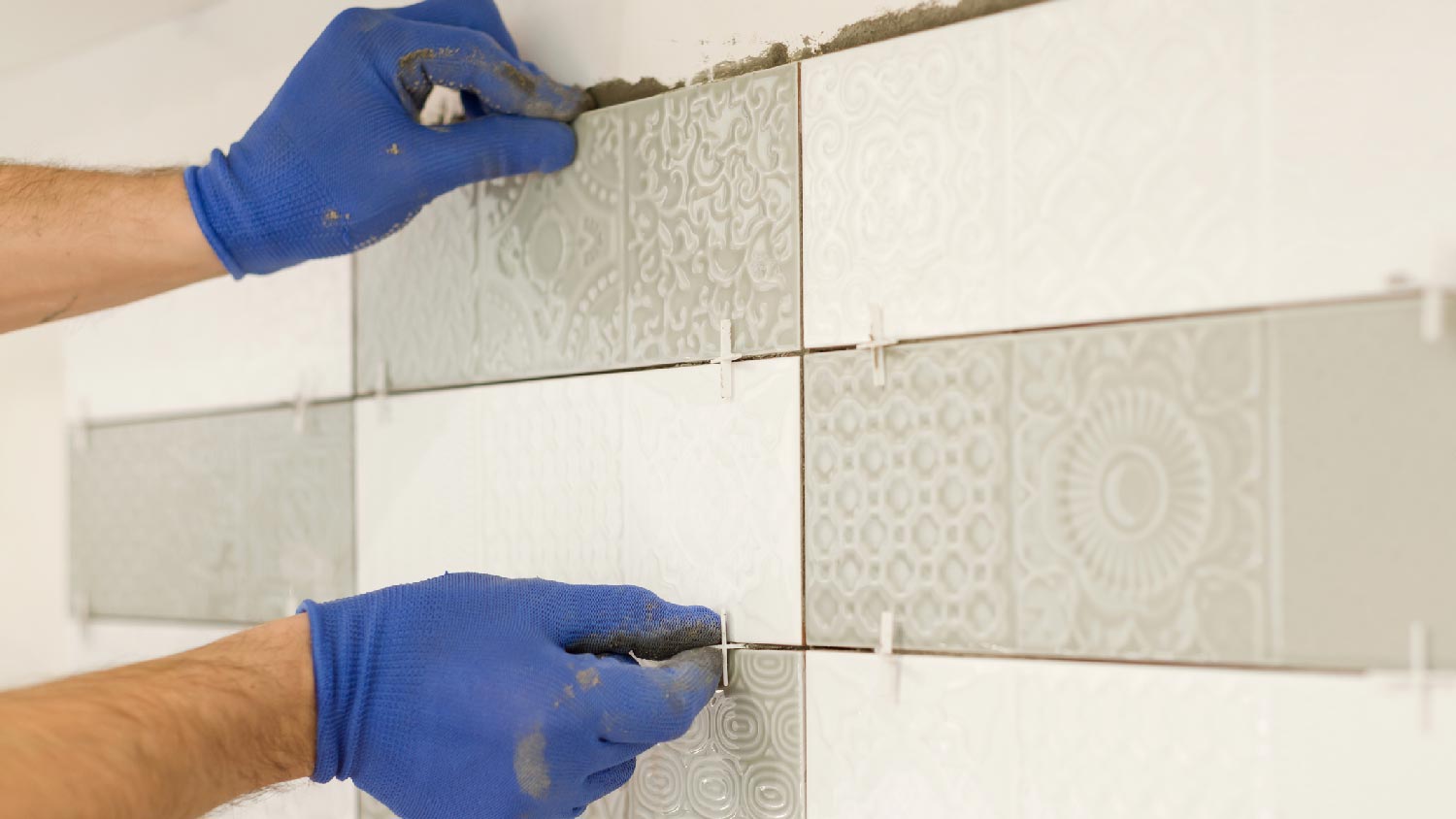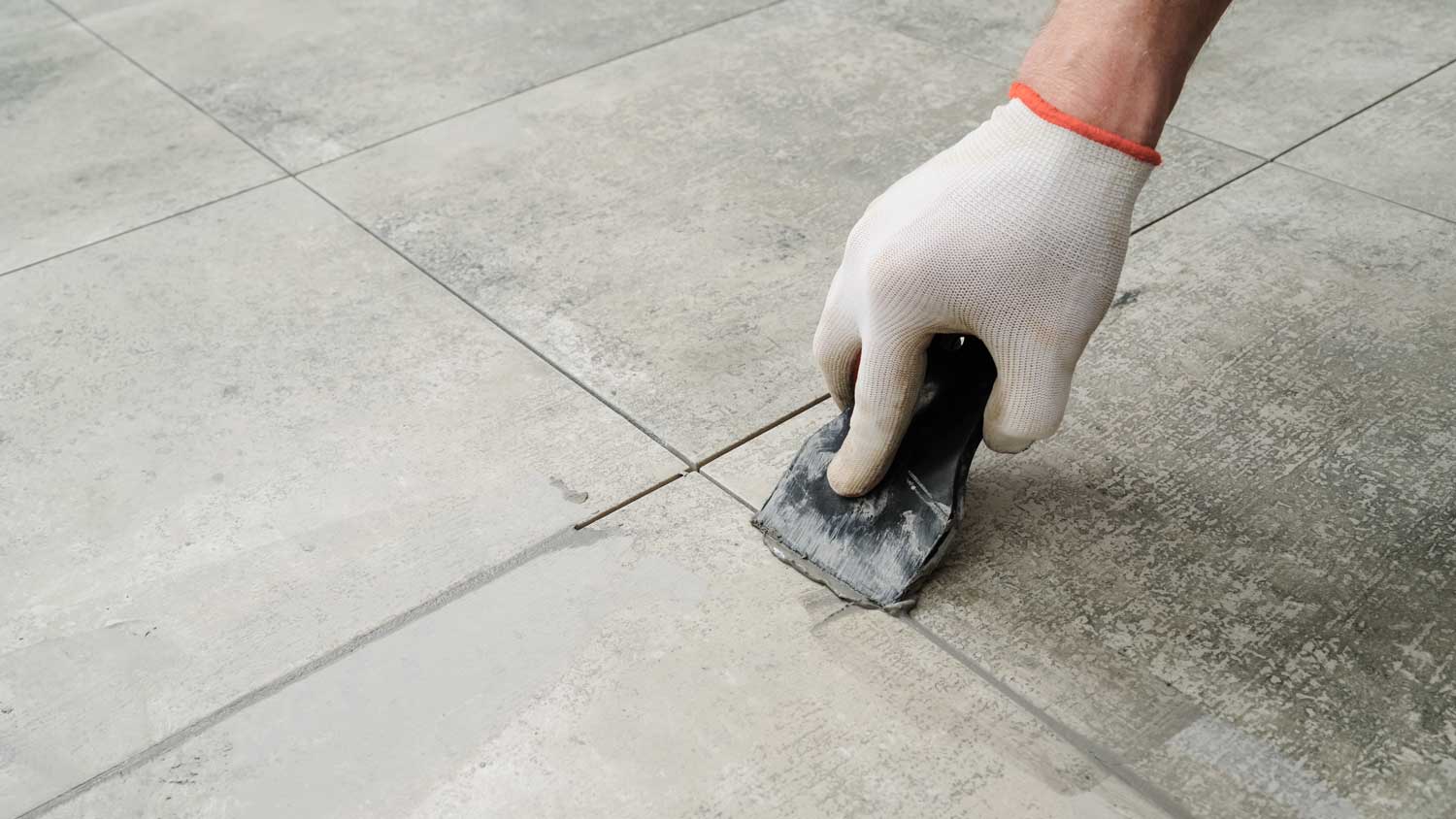
The cost to install travertine tile depends on materials and the size of the project. This guide to travertine tile cost will help you budget accordingly.
Add some zest to your kitchen with a new backsplash


Drywall is a perfectly fine option behind a kitchen backsplash.
You should use moisture-resistant green-board drywall in your kitchen.
If installing over existing drywall, be sure to clean it first.
The average cost to install a kitchen backsplash is $1,000.
A backsplash adds a layer of pizzazz and protection to the wall above your kitchen counter, sink, and stove. If you're thinking of adding a new backsplash, you may wonder: Can you put backsplash on drywall? The short answer is yes, you can. But there are a few important things you need to know about installing a new backsplash on your kitchen drywall.
Installing a backsplash on your kitchen's drywall is safe and effective because it's not a highly moist surface, such as a bathroom wall that gets a lot of steam. As long as the drywall is clean and smooth, you shouldn't have any trouble installing a backsplash over the top of it.
It’s also relatively simple. In most cases, you don't need to tear out existing drywall to install a backer board for this project since the area doesn’t get foot traffic like a tile floor.
Drywall comes in a range of types, including standard drywall, which is appropriate for use around the home, and moisture-resistant green-board drywall, which is a good pick for rooms like the kitchen and bathroom.
Green-board drywall has a paperless backing and an additional coating that blocks moisture and reduces mold growth. While you may not need to tear out your existing drywall and replace it with a moisture-resistant option, it's something to consider if you're starting from scratch or completely remodeling your kitchen.
Whether it's a tile or quartz backsplash, or even a peel-and-stick option, wall prep before installation is a must. Kitchens get dirty quickly, especially if you cook frequently. Grease can build up on the wall, interfering with the adhesion of the backsplash.
Use a degreaser to clean the drywall above the counter, making sure to thoroughly remove any stains. Once you've cleaned the wall, fill in any divots with a spackling compound. When that's dry, sand the wall to get a smooth surface.
Finally, wipe the wall with a damp rag to remove the sanding dust, then let dry.

How you install a backsplash depends largely on the materials you're using. To install a tile backsplash, you'll first want to attach a ledger board to the wall.
The ledger board will support the tile's weight as the adhesive dries.
Before placing the tile on the wall, plan its layout. You can spread the tile out on the floor or another flat surface and arrange it in the pattern you want.
When you start applying the tile to the wall, work in small sections, starting from the center. Apply the adhesive to the wall, then press the first tile against it. Install the remaining tile, working slowly and checking your work as you go to ensure everything is even.
Once the tiles are on the wall, it's time to apply and seal the grout.
If you're not confident in your DIY skills, consider hiring a local professional backsplash installer to do the job for you.
From average costs to expert advice, get all the answers you need to get your job done.

The cost to install travertine tile depends on materials and the size of the project. This guide to travertine tile cost will help you budget accordingly.

Tile varies dramatically in price, but there’s something for every budget. This guide will help you plan for tile installation costs, no matter the project.

Discover the average cost of grout repair, key price factors, and tips to save. Get expert advice to plan your grout repair project with confidence.

If you’re wondering how long it takes for grout to dry, our guide has the answers. Letting grout dry and cure completely ensures a long-lasting tile job.

With so many different types of caulk on the market, how do you know which one is right for your home improvement project? Here’s how to figure it out.

If your grout lines look worn out or aren’t the right color for your space, it’s easy to give them a refresh. Here’s how to change grout color for under $50.